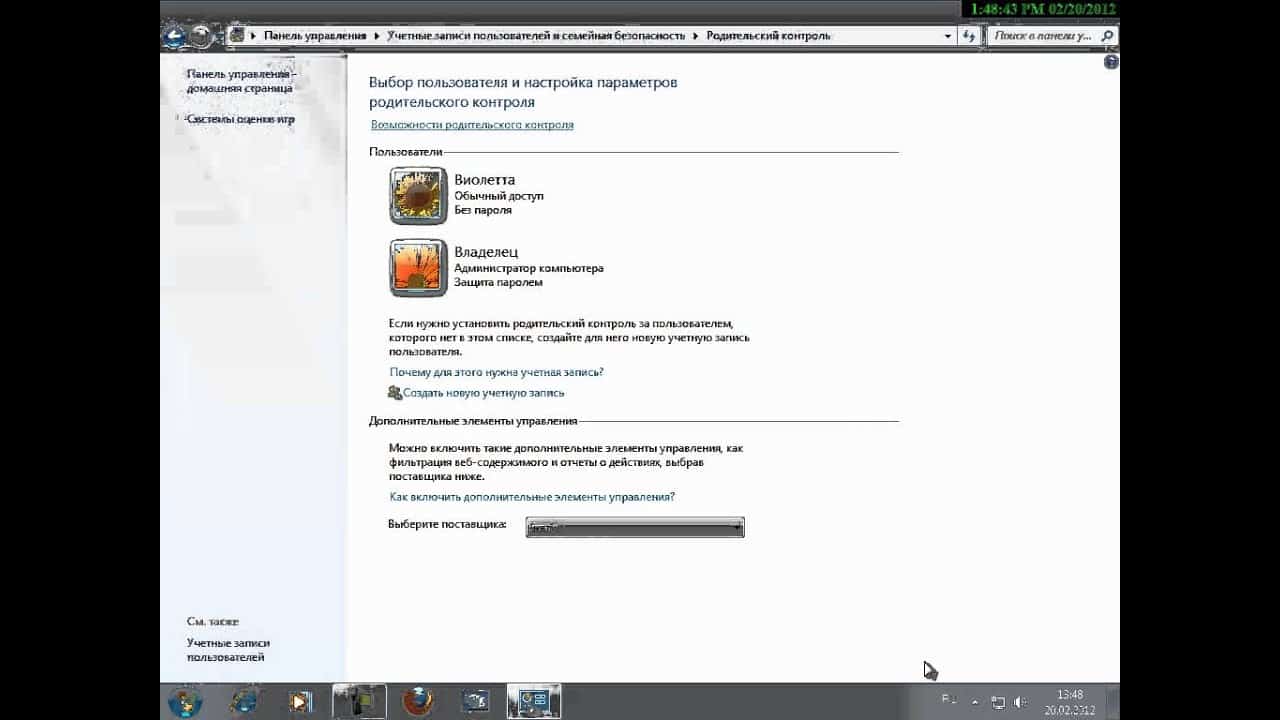- The need to disable parental controls
- Ability to independently manage access to content
- How to disable parental controls on Windows
- Step by step instructions for different versions of Windows
- Alternative ways to disable parental controls
- How to disable parental controls on Android and iOS
- Instructions for different OS versions on mobile devices
- Safety Tips for Disabling Parental Controls
The need to disable parental controls
Parental controls are a useful feature for parents who want to protect their children from inappropriate content online. However, it often happens that parental controls become a burden for children who are grown up and ready to use the Internet independently. In addition, parental controls can limit access to useful sites and applications that may be necessary for school, work or entertainment.
In some cases, parental controls can even block access to social networks or instant messengers, which can lead to social isolation. So, if you think your child is old and responsible enough to use the Internet without parental controls, then disabling this feature may be necessary. In this article we will tell you how to disable parental controls on your computer and smartphone. Parental controls are a useful feature that allows parents to control their children's online activities. But sometimes this feature can limit access to certain sites or applications that are necessary for work or school. In this case, you can disable parental controls on your computer or smartphone.
However, it is worth remembering that disabling parental controls may lead to access to inappropriate content, which may be unsafe for children. So if you decide to turn off parental controls, be careful about the sites and apps you use.
On your computer, you can turn off parental controls by going to your user account settings. On a smartphone, this feature can be disabled in the security and privacy settings. In addition, there are special programs that help disable parental controls on your computer or smartphone.
But do not forget that parental control is not just about restricting access to certain sites and applications, it is also about setting the time that a child spends on the Internet, as well as monitoring his activities. Therefore, before turning off parental controls, consider all the consequences and make decisions in the best interests of your children.
Ability to independently manage access to content
Disabling parental controls on your computer and smartphone may be necessary in various situations, for example, if you want to gain full access to content that was previously restricted, or if you want to remove restrictions for other users.
In order to disable parental controls on your computer, you need to go to your user account settings and disable the corresponding option. On most operating systems this can be done as follows:
1. Open 'Control Panel' and go to 'Accounts and Family Safety'.
2. Select the desired account and click on the 'Change account settings' button.
3. In the 'Family Safety' section, disable parental controls.
On smartphones and tablets, the process for disabling parental controls may vary depending on the operating system. In general, this can be done as follows:
1. Go to device settings.
2. Find the 'Family Safety' or 'Advanced Settings' section.
3. Turn off parental controls.
Disabling parental controls can entail a number of risks, especially when it comes to children. Therefore, before making this decision, you need to carefully weigh the pros and cons.
How to disable parental controls on Windows
Parental controls are a useful tool that allows parents to limit their children's access to certain computer functions. However, sometimes it becomes necessary to disable it. To do this you need to do the following:
1. Open 'Control Panel' and select 'Accounts and Data Protection'.
2. Click on 'Parental Controls' and select the desired user.
3. Click on 'Disable Parental Controls' and confirm your choice.
After this, parental controls will be disabled. However, do not forget to pay attention to the safety of the computer and children to avoid unwanted situations.
Step by step instructions for different versions of Windows
If you want to disable parental controls on your computer or smartphone, then you are in the right place. In this article, we will provide you with step-by-step instructions for different versions of Windows.
Windows 10:
1. Click on the 'Start' icon in the lower left corner of the screen.
2. Select 'Settings'.
3. Find and select 'Family Safety'.
4. Select the account for which you want to disable parental controls.
5. Select 'Parental Controls' and switch it to 'Off'.
Windows 8:
1. Press the Windows key on your keyboard.
2. Find and select 'Settings'.
3. Select 'Change PC settings'.
4. Select 'Family Safety'.
5. Select the account for which you want to disable parental controls.
6. Select 'Parental Controls' and switch it to 'Off'.
Windows 7:
1. Click on the 'Start' icon in the lower left corner of the screen.
2. Find and select 'Control Panel'.
3. Select 'Accounts and Security'.
4. Select 'Family Control'.
5. Select the account for which you want to disable parental controls.
6. Select 'Parental Controls' and switch it to 'Off'.
Now you know how to disable parental controls on your computer or smartphone. If you have any questions, do not hesitate to seek professional help.
Alternative ways to disable parental controls
If you can't turn off parental controls on your device, there are several alternative methods that can help you bypass the restrictions.
1. Use a VPN service. VPN services allow you to bypass blocking and restrictions, including parental controls. Some well-known VPN services include NordVPN, ExpressVPN, and CyberGhost.
2. Change the DNS server. DNS servers are used to translate domain names into IP addresses. Parental controls may block access to some DNS servers. To bypass this restriction, you can change the DNS server on your device. For example, you can use Google's public DNS server - 8.8.8.8.
3. Use a proxy server. A proxy server allows you to bypass blocks and restrictions, including parental controls. There are many free and paid proxy servers that you can use.
Do not forget that bypassing parental controls can lead to undesirable consequences and a violation of trust between parents and children. Therefore, before using any of these methods, be sure to discuss it with your parents or other responsible persons.
How to disable parental controls on Android and iOS
Parental controls on smartphones and tablets can be a useful feature to protect children from inappropriate content online. However, sometimes the user may need to disable this feature. In this article, we'll look at how to disable parental controls on Android and iOS.
On Android devices, you can disable parental controls as follows:
- 1. Open 'Settings' on your device
- 2. Find the 'Security' or 'Advanced Settings' section
- 3. Click on 'Device Administrators'
- 4. Uncheck 'Parental Controls'
On iOS devices, you can disable parental controls as follows:
- 1. Open 'Settings' on your device
- 2. Find 'General' and click on it
- 3. Find 'Restrictions' and click on it
- 4. Enter a password if you have set one
- 5. Uncheck 'Parental Controls'
Sometimes parental controls can be set at the ISP level or at the router level. In this case, you need to contact your ISP or router administrator to disable this feature.
In conclusion, turning off parental controls can be helpful in certain cases, but be aware that it may increase the risk of your children being exposed to dangerous situations online. Therefore, disable this feature only if you are sure of the safety of your children.
Instructions for different OS versions on mobile devices
Disabling parental controls on mobile devices may vary depending on the operating system version. Here are the instructions for the most popular OS:
Android: Open the Settings app, then select Parental Controls and enter your password. Then find the Screen Time Limits option and turn it off.
iOS: Open the Settings app, select General and then Restrictions. Enter a password, if set, and click on “Enable Restrictions”. Then turn off the Screen Time Limits switch.
Windows: Open Windows Settings, select Family Safety and then Parental Controls. Click on your account and then “Edit Account.” Select "No, do not restrict use" for each category.
macOS: Open System Preferences, select Parental Controls and then your account. Click on "Allow unlimited use" for each category.
Turning off parental controls can be helpful, but don't forget that they can help protect your children from inappropriate content online.
Safety Tips for Disabling Parental Controls
Turning off parental controls can be useful if you want more freedom in using your computer or smartphone. However, before you do this, you need to make sure you understand the risks this may entail. Here are some tips to help you stay safe when turning off parental controls:
- Keep backup copies of your data. Before disabling parental controls, make sure you have backed up all important files and documents. It's also a good idea to back up your entire system so you can restore it if something goes wrong.
- Install antivirus software. Without parental controls, you become more vulnerable to malware and viruses. Install reliable antivirus software and update it regularly.
- Limit access to personal information. Make sure that your personal information, such as passwords and credit card numbers, is protected with strong passwords and is not accessible to other users of your computer or smartphone.
- Don't download unfamiliar files. Disabling parental controls means that you can download and install any programs and files, but do not forget to check them for viruses and other threats.
- Be careful on the Internet. Without parental controls, you can easily stumble upon adult content or other dangerous sites. Be careful and use content filters if necessary.
Turning off parental controls may pose some risks, but if you follow these tips, you can stay safe and have more freedom in using your computer or smartphone.
Read further:






